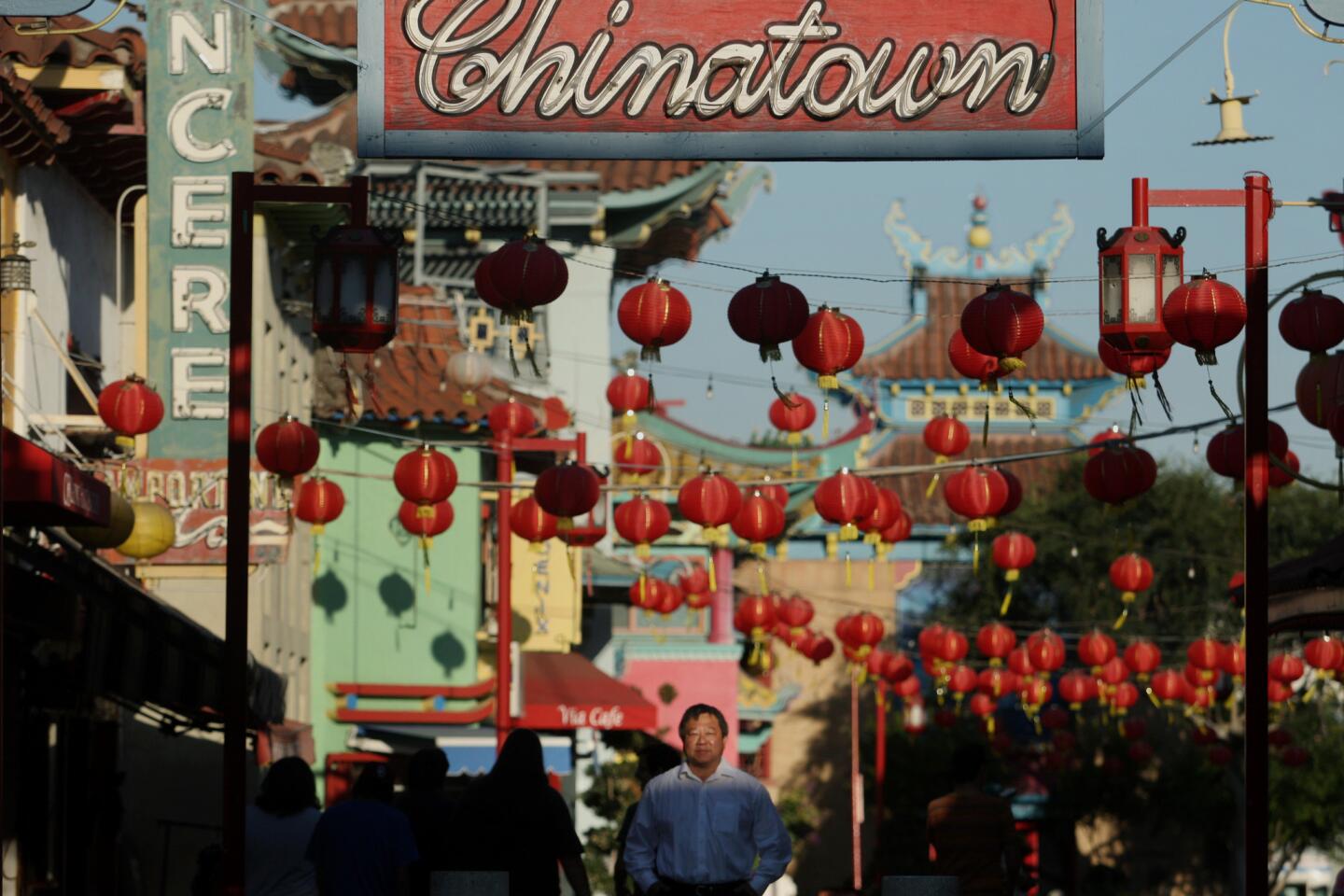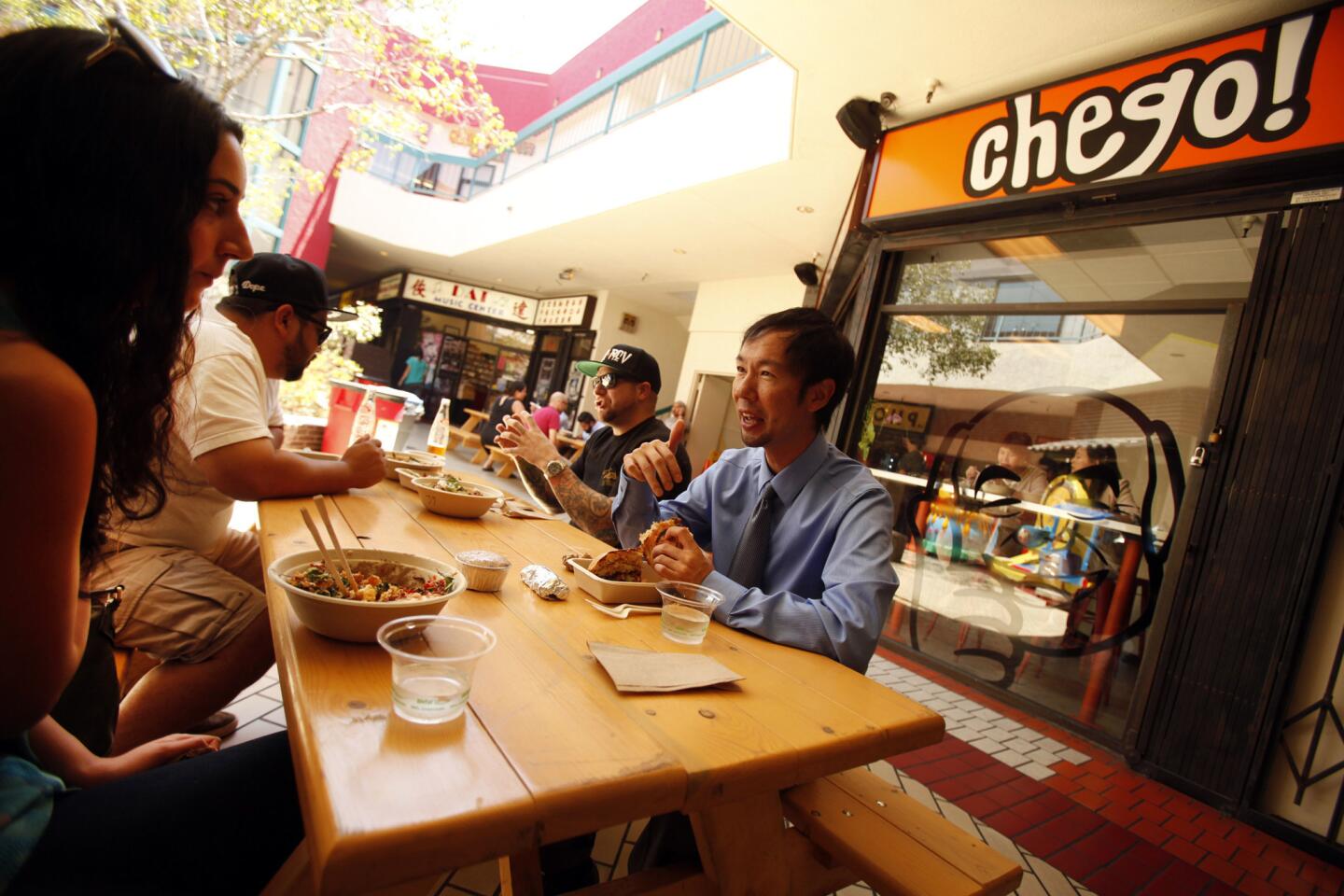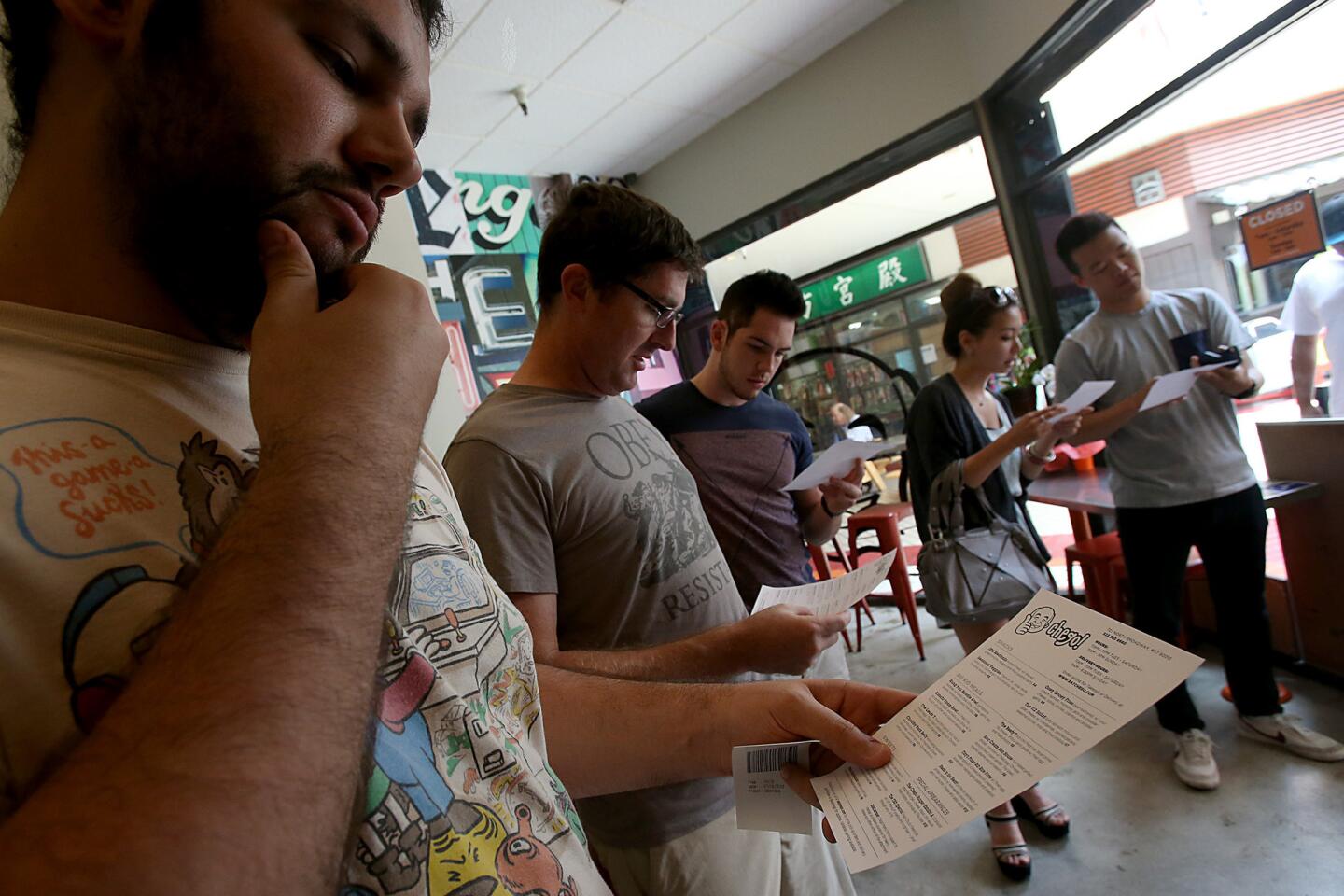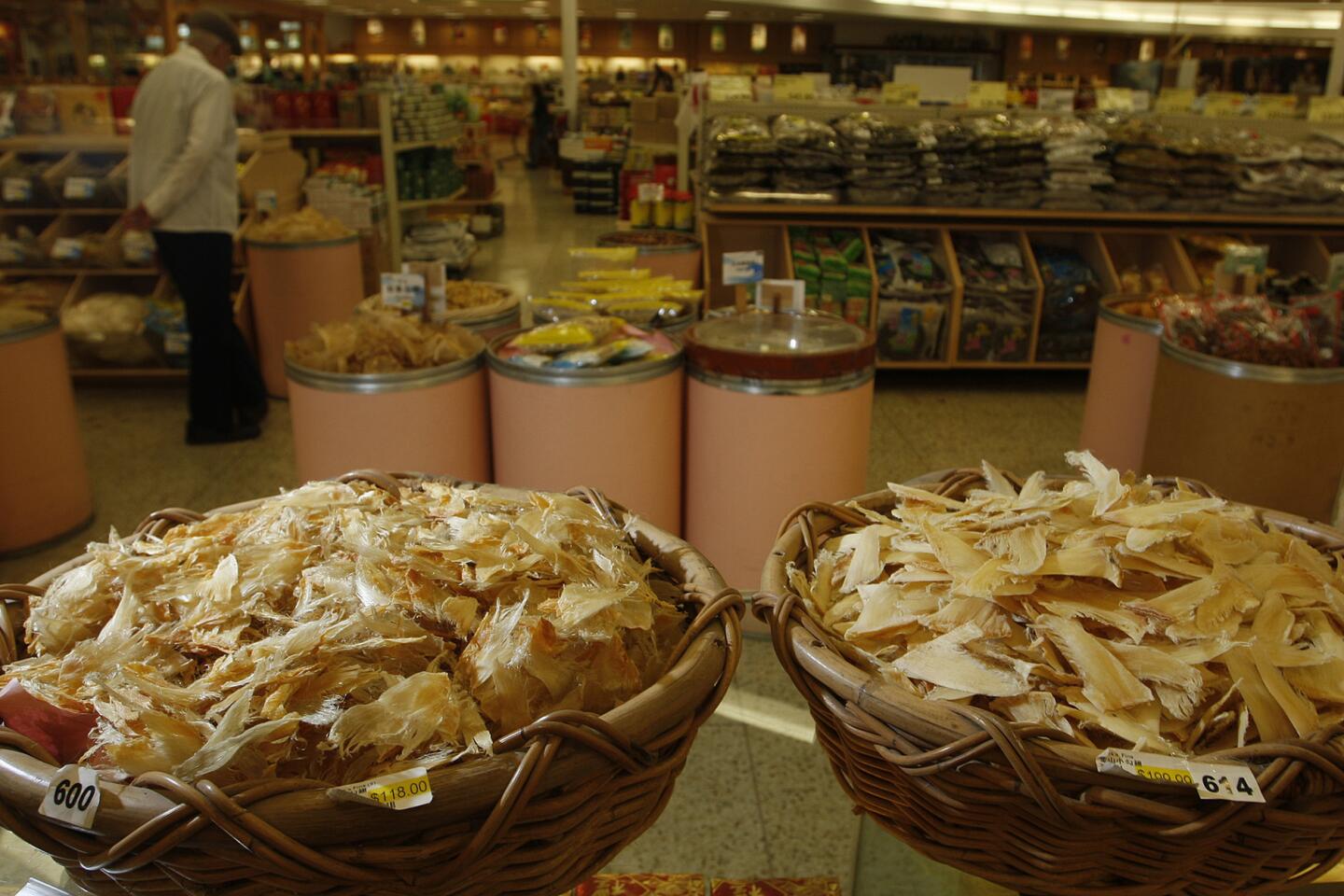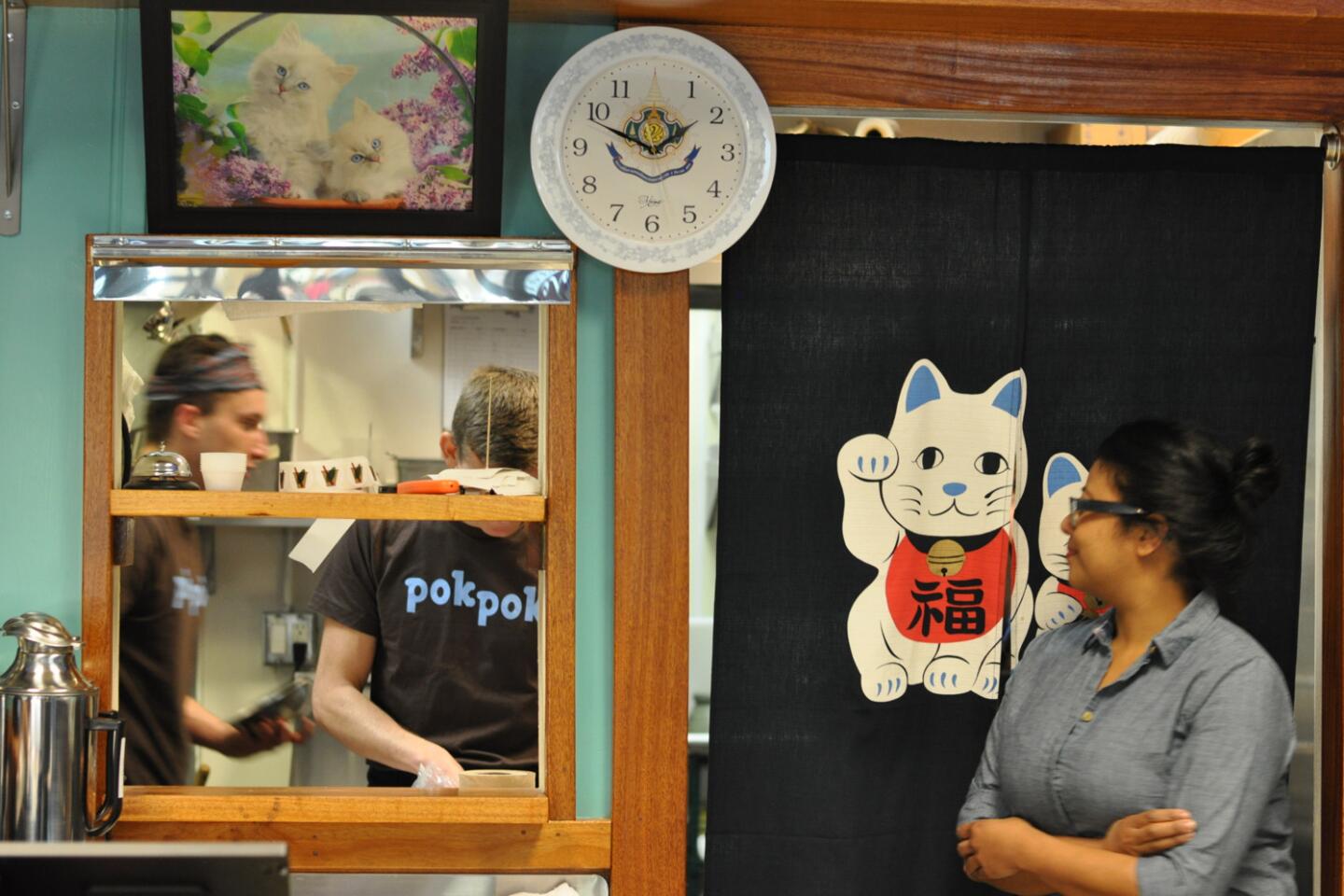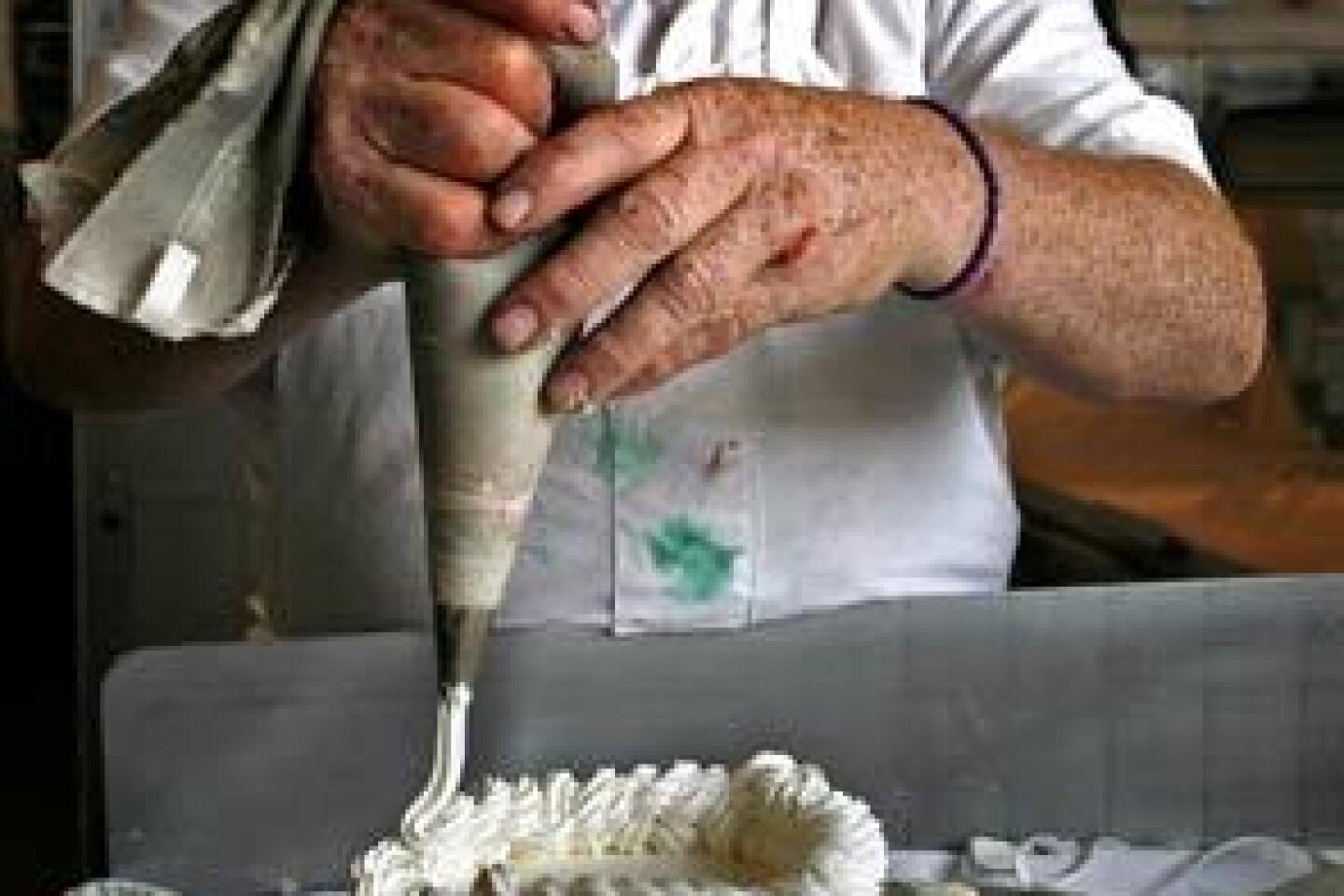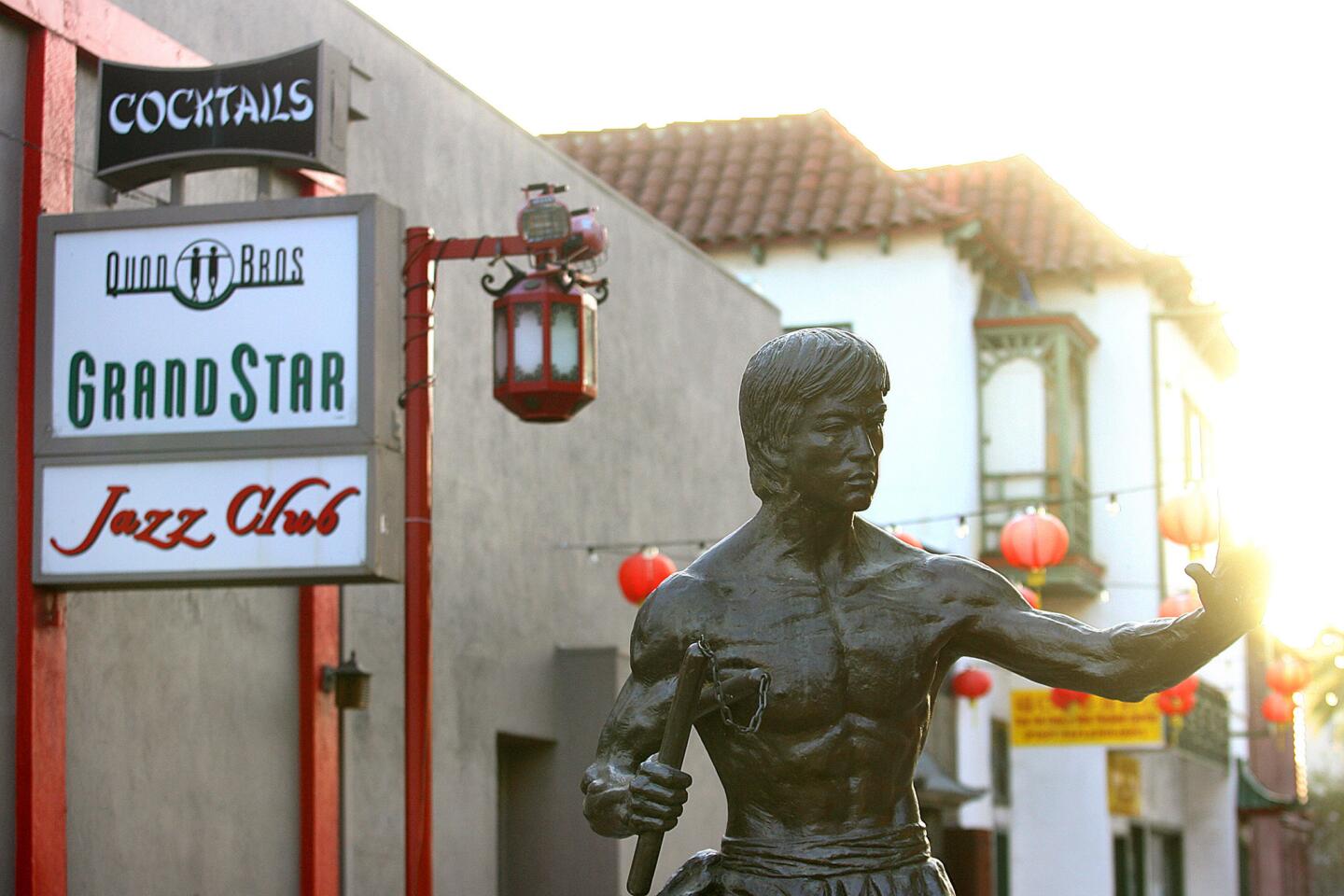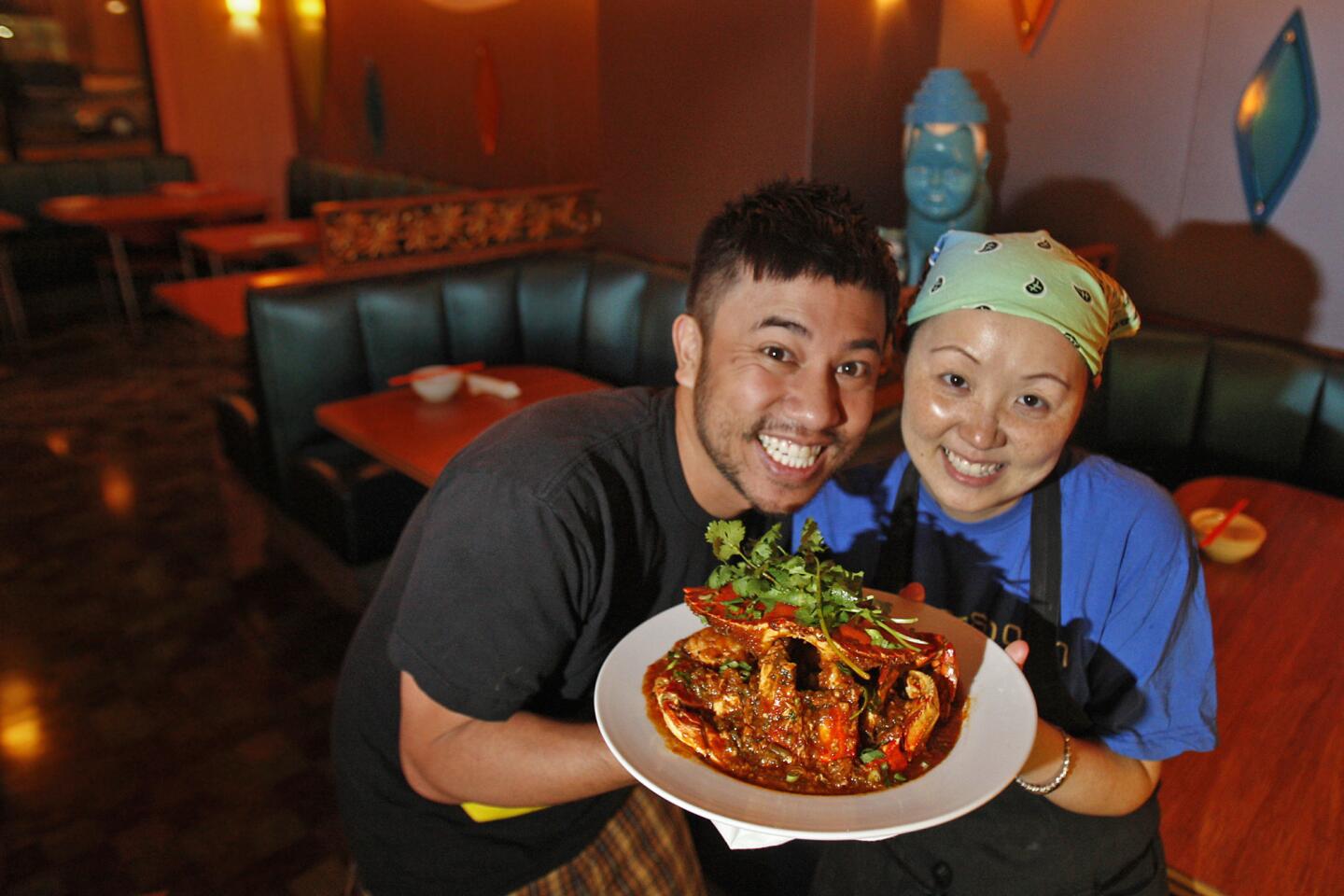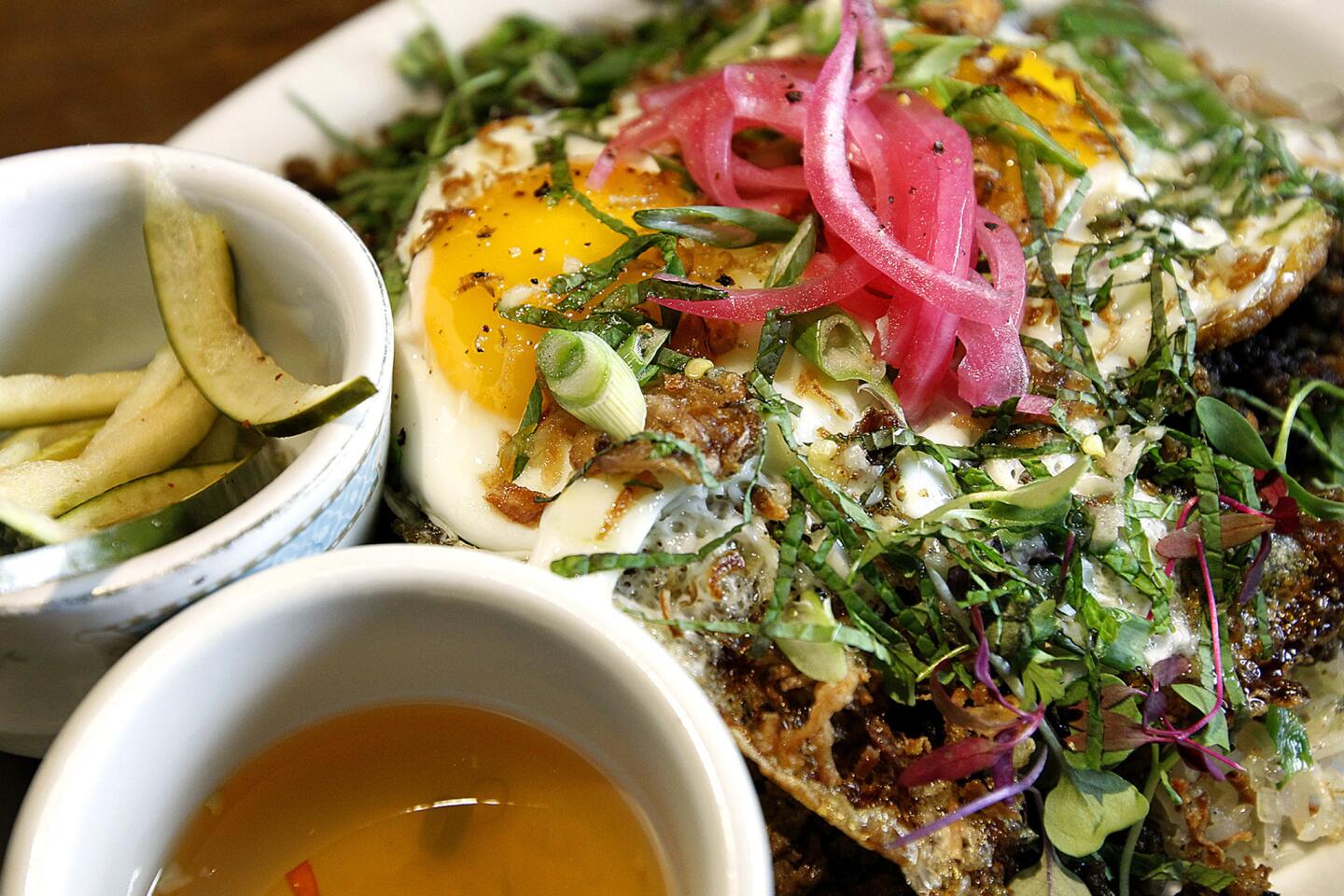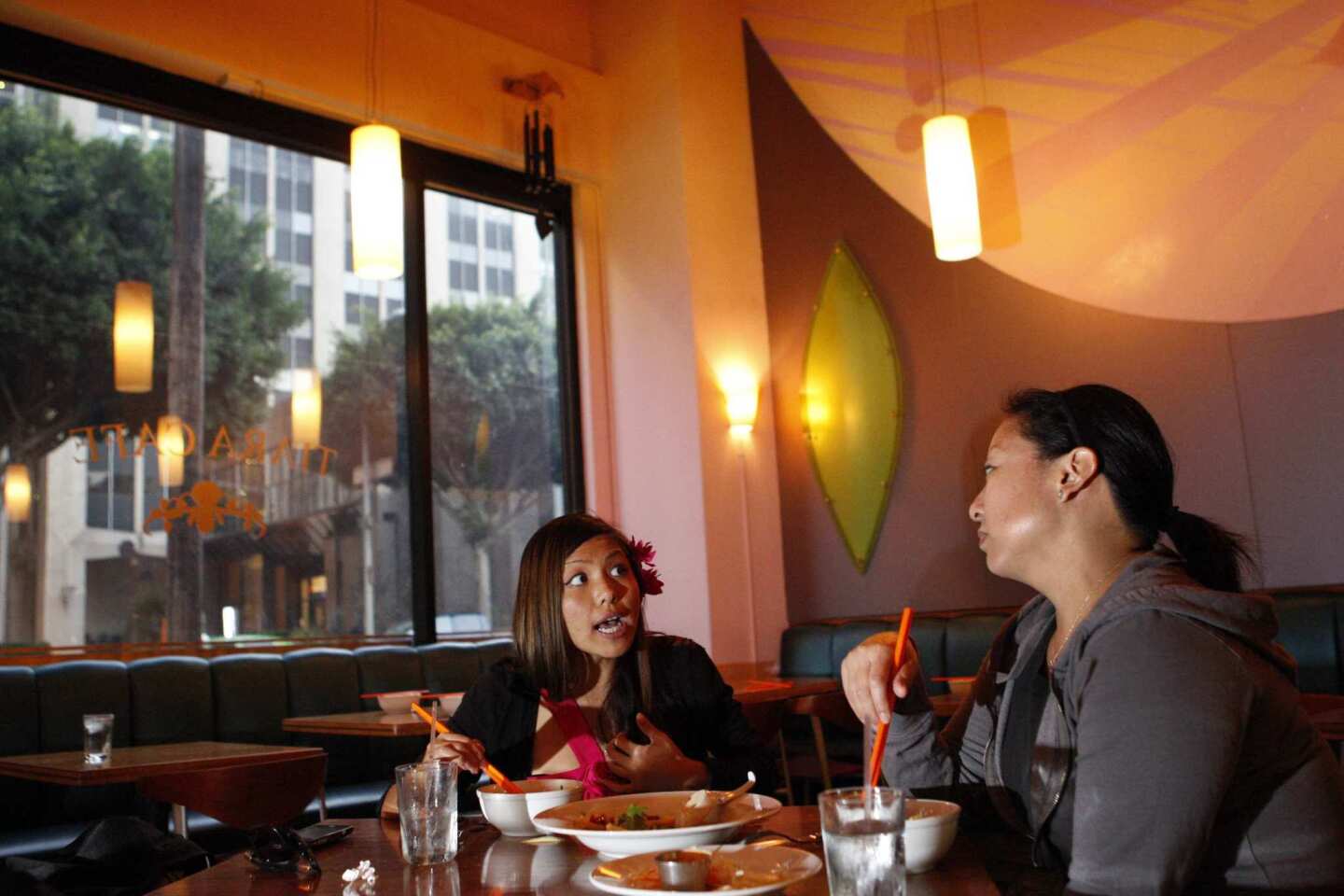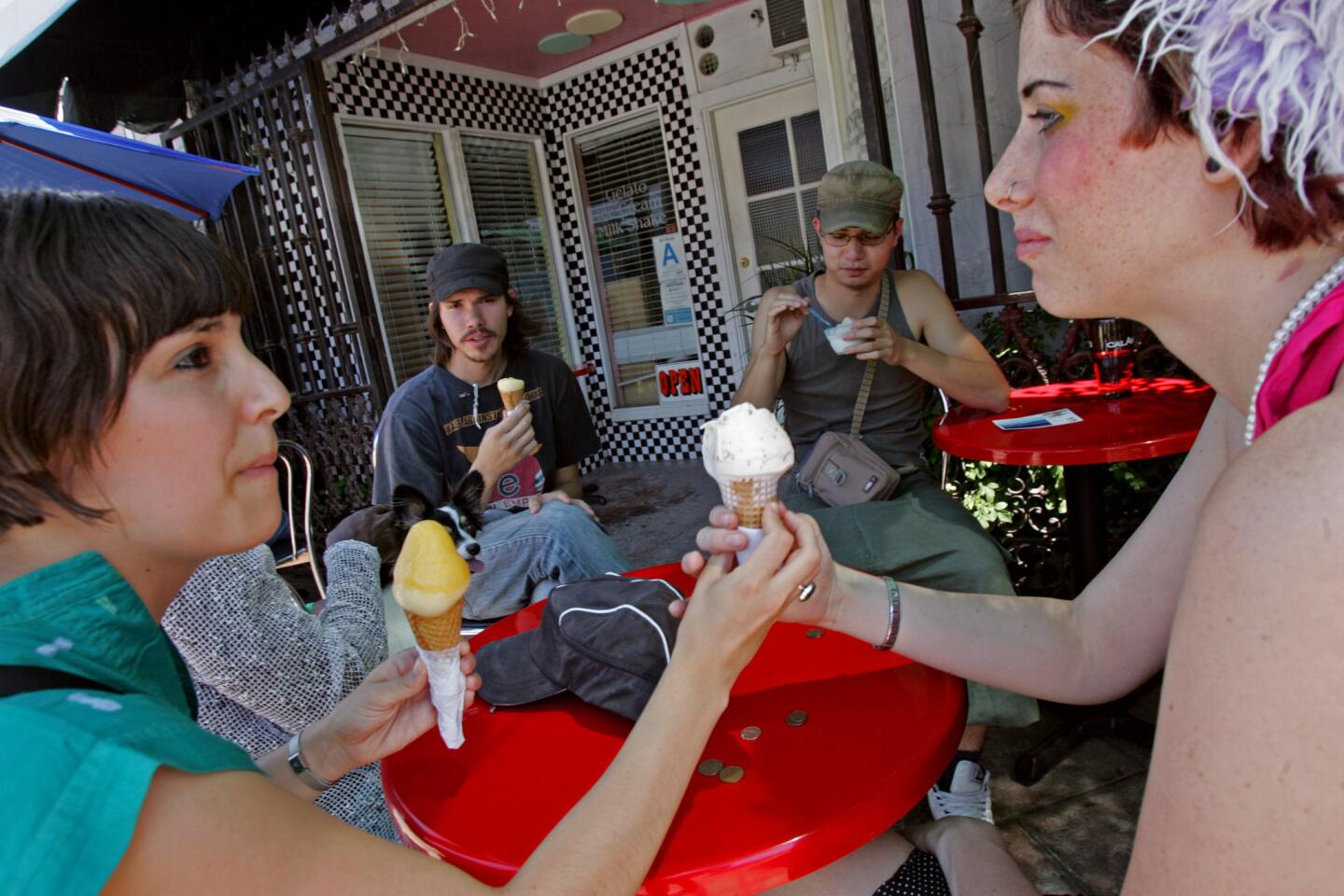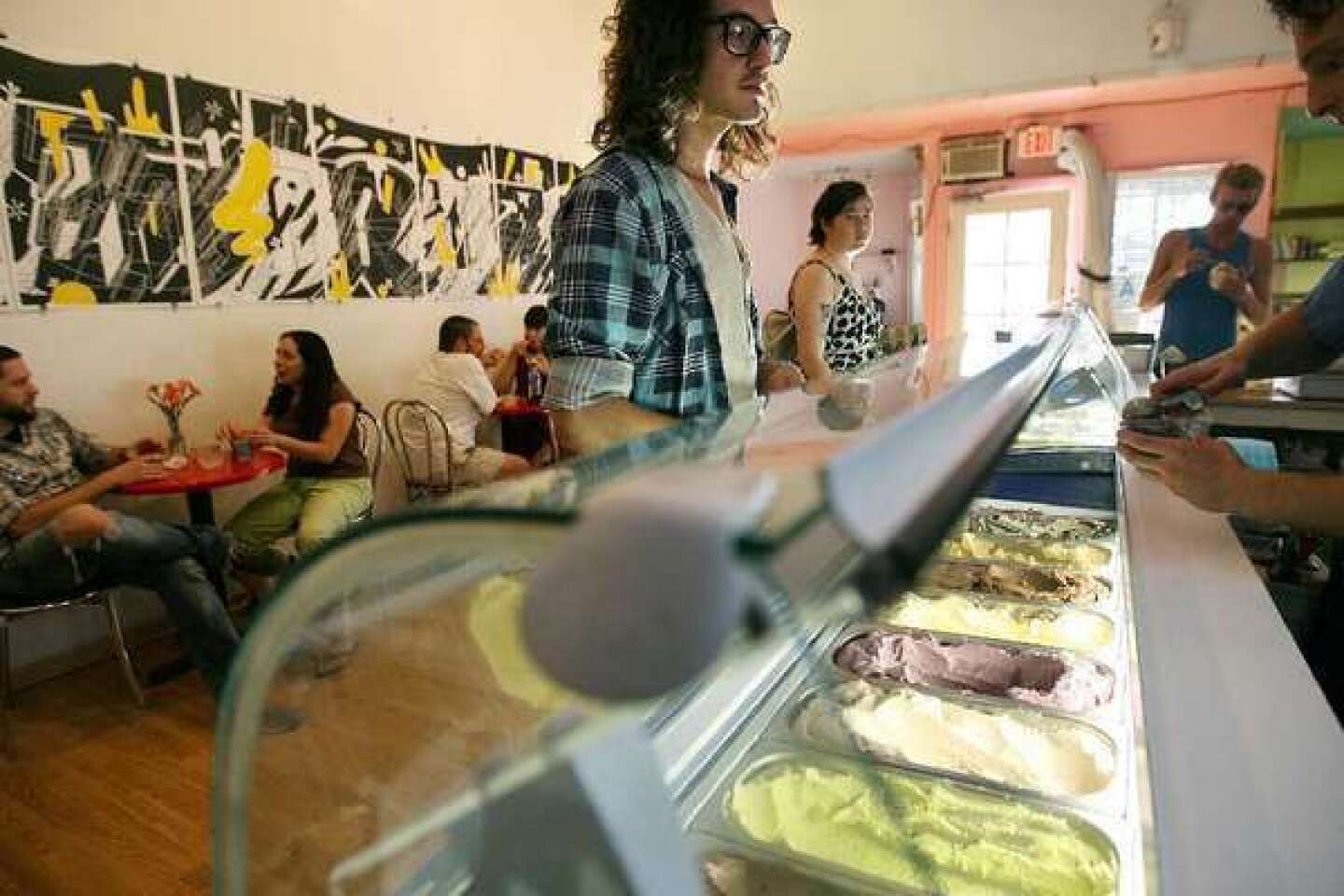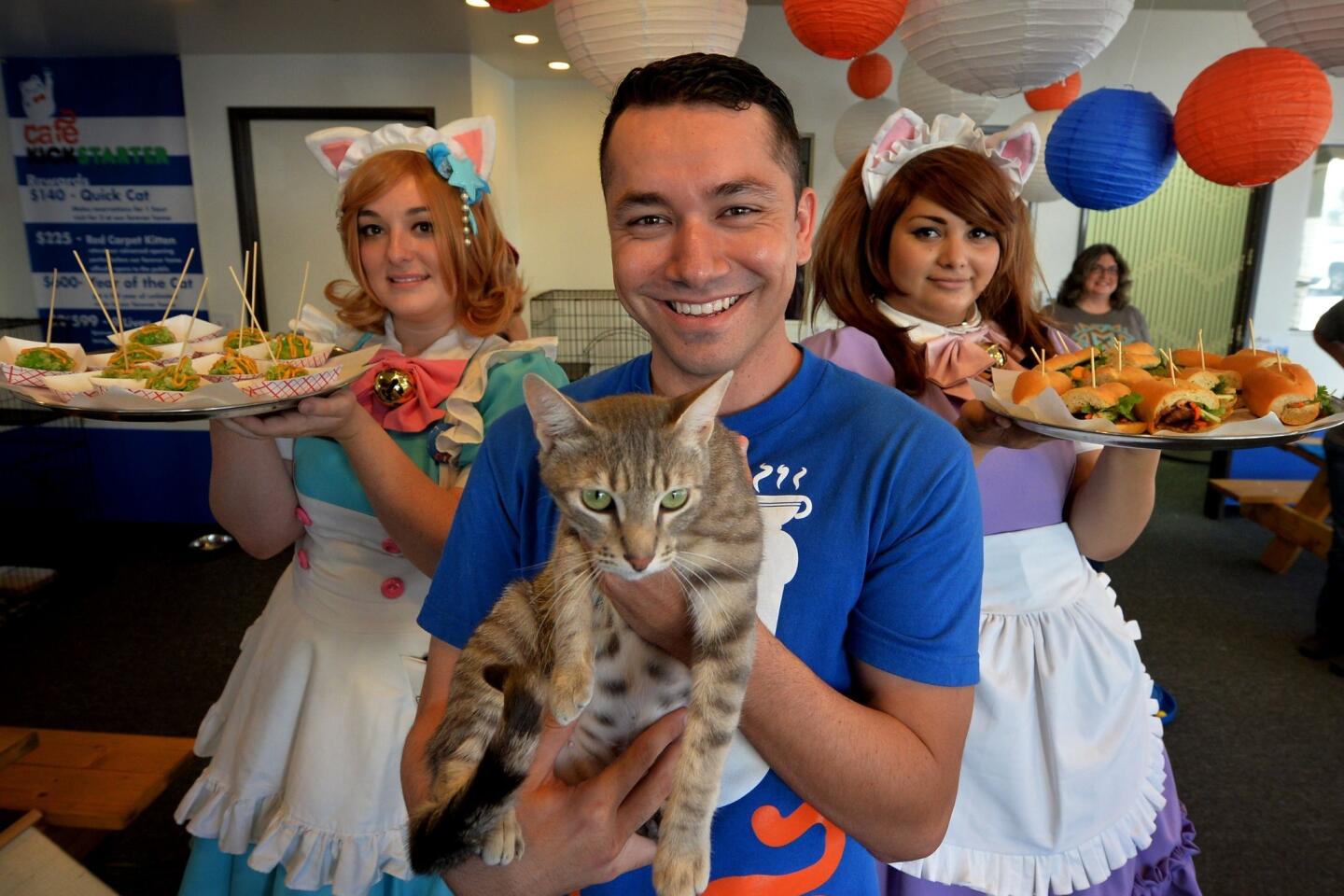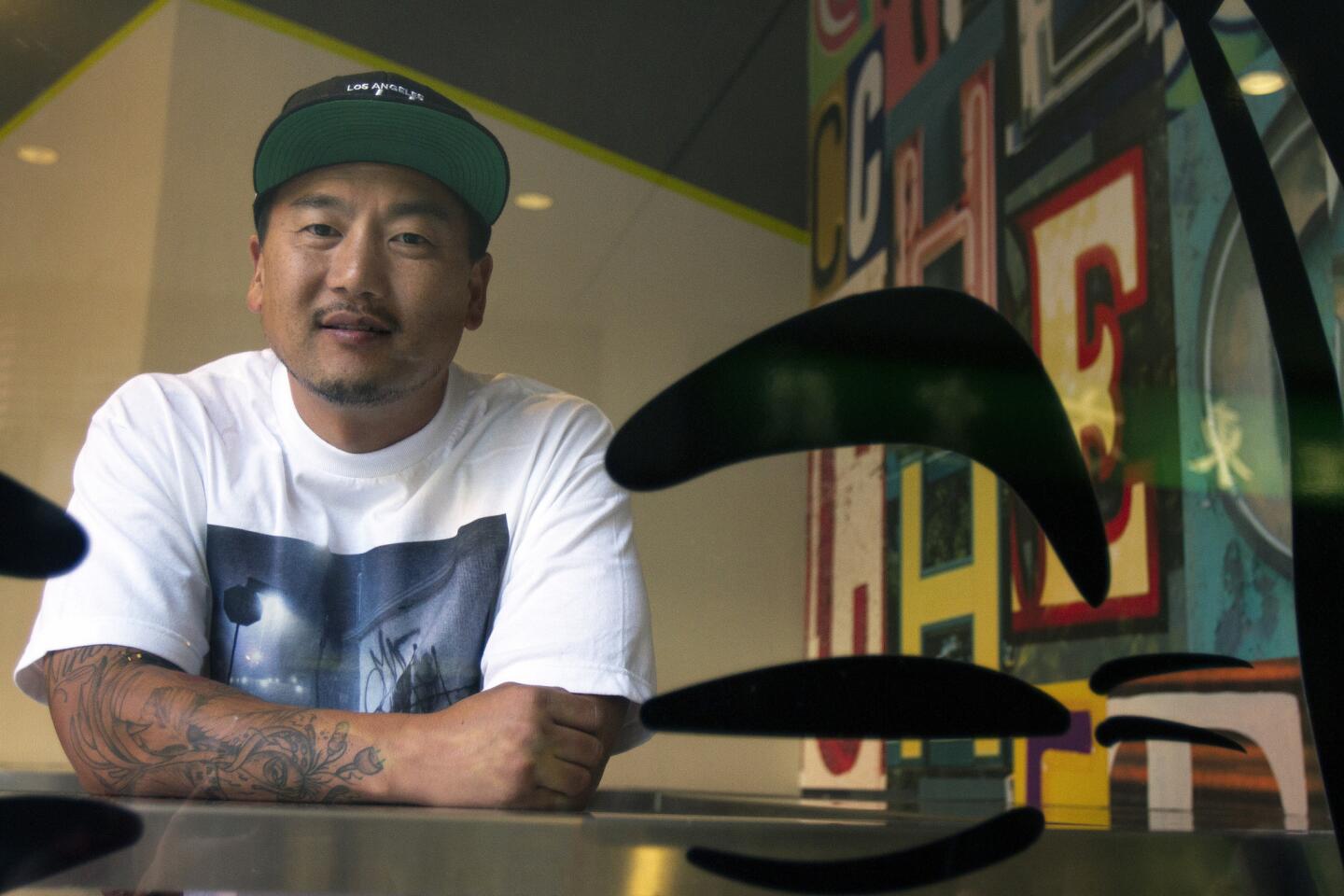Chinatown emerging as L.A.’s hottest restaurant destination
The arts district, flanking the Los Angeles River downtown, is approaching peak restaurant density. That patch of Pico Boulevard near Fairfax Avenue is vibrant in ways nobody could have predicted a decade ago. We’re seeing new concentrations of restaurants in Highland Park, Manhattan Beach, Silver Lake, Venice and Boyle Heights that are strong enough to excite anti-gentrification activists who are frightened that craft beer and avocado toast might attract the wrong sort of neighbors.
But if you had to choose the next neighborhood to attract long lines, innovative kitchens and blurbs in national magazines, you would do well to put your money on Chinatown, the hokey, half-dead tourist enclave you may have last visited that week you were on jury duty.
If you grew up in Los Angeles, your fondest memories of Chinatown may involve live crabs at Mon Kee, pan-fried dumplings at Mandarin Deli or punk-rock shows at the Hong Kong Cafe; dim sum at Miriwa, char-edged chow fun at Home Cafe, or 2 a.m. oyster-pork hot pots at Happy Valley — institutions now as lost to history as the memory that the district was once an Italian neighborhood.
But today’s Chinatown, sparked into life by cheap rents and the gallery boom, is in the process of becoming an entirely new place. Future generations may well remember the neighborhood for the rustic Thai cooking at Andy Ricker’s new pair of Pok Pok restaurants, part of an expanding Portland, Ore., (and Brooklyn) empire with a noodle shop that opened Dec. 30 in the Far East Plaza and a more serious outlet set to open in the Mandarin Plaza this spring. The Little Jewel of New Orleans slings jambalaya and fried-oyster po’ boys in the former Hoy King space down on Ord Street, where chow mein used to rule. Tacos Mexicali serves vampiros on fresh Baja tortillas on the block once ruled by the Kim Sing movie house; the new Lobsta Shack, an offshoot of the Lobsta Truck, serves New England lobster rolls on Cesar E. Chavez Avenue; and Empress Pavilion, the grandest of the Hong Kong-style seafood restaurants, just reopened.
The new culinary Chinatown, like L.A.’s new-wave food truck movement, may have been jump-started by Roy Choi. His restaurant Chego moved its spicy pan-Asian rice bowls two years ago from the Westside to Far East Plaza, where it occupies the same storefront where the city’s first soup dumplings were prepared in the early 1980s. (The Far East Plaza, at the heart of the first Chinatown revival in the late 1970s, is still home to the tea shop Ten Ren, the herbalist Wing Hop Fung and the splendid Chiu Chow cafe Kim Chuy, which has been slinging fried leek cakes and its peanut-laced satay noodles since 1982.)
An outlet of the ice cream shop Scoops is a couple of storefronts away from Chego in the complex; brown bread ice cream, made with Grape Nuts, is probably the most conventional of the flavors, some of which are laced with booze and some of which are vegan. At a tiny counter in a corner of Scoops, Cognoscenti Coffee brews lattes flavored with Thai pandan leaf. Champ Ramen, a noodle project from Alvin Cailan and Johnny Lee of Grand Central Market’s insanely popular Eggslut, is set to open in the plaza any day now.
Catfe, L.A.’s first cat cafe, had a test run a couple of months ago, attended by many times more people than tabbies, and the Starry Kitchen sandwich stand, famous for its Vietnamese-style bánh mì stuffed with fried tofu balls, pops up from time to time. Starry Kitchen proper, a semi-permanent pop-up that has been operating within the old Grand Star Jazz Club for slightly more than a year, almost qualifies as a Chinatown pioneer.
“Highland Park is getting hot,” says Jack Benchakul of Cognoscenti Coffee, carefully pulling an espresso. “The South Park area of downtown is becoming an interesting place to be. But nothing — nothing — is moving quite as fast as Chinatown. To walk in here every day — the smells, the flurry of business, the young people and the old-timers, is the closest thing to walking into a market street in Bangkok. I’m definitely not mad at that.”
::
Why Chinatown is becoming a hot dining spot again
Chinatown, already crowded with restaurants, is not an obvious spot for a revival. At the moment, the area may be best known for its galleries and art bars, but it is still home to wishing wells, passable dim sum and the slippery shrimp at Yang Chow; Cantonese roast duck at Lucky Deli and the whipped cream cakes at Phoenix Bakery; the breakfast congee at J&K and the live ducks at Peking Poultry; the Cambodian noodles at New Kamara and the delicious Saigon-style bánh mì at Buu Dien.
But with the action in Chinese cuisine now in the San Gabriel Valley and the Southeast Asian places that replaced the old Chinatown restaurants starting to fade, there are lots of underused spaces to occupy. There’s much economic diversity in the neighborhood as well. Residents include affluent condo-dwellers, post-collegians in their first apartments and low-income seniors. With the proximity of Union Station, Chinatown is perhaps better served by transit than anywhere else in Los Angeles.
What’s more, Chinatown spaces come complete with traditions to either embrace or subvert. Marcus Christiana-Beniger, proprietor of the Little Jewel of New Orleans, points out that many Chinatown spaces have live-fire permits grandfathered in, and he is already talking about the wood-roasted geese he plans to sell alongside his smoky andouille and cochon de lait. Jack Benchakul of Cognoscenti Coffee, who is of Thai descent, brews third-wave coffee in a plaza until recently dominated by Vietnamese cafe sua da.
Imagine: a brave new culinary world without tacos, without tapas, without kale.
Follow me on Twitter @thejgold
More to Read
Eat your way across L.A.
Get our weekly Tasting Notes newsletter for reviews, news and more.
You may occasionally receive promotional content from the Los Angeles Times.
